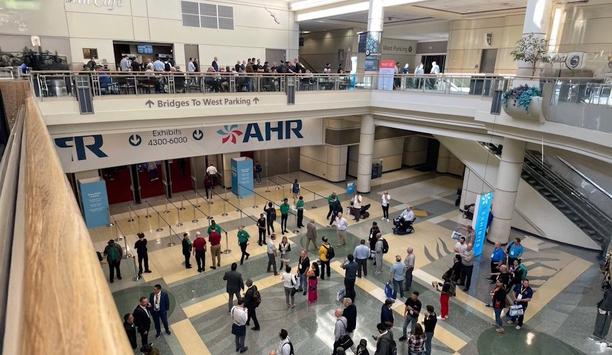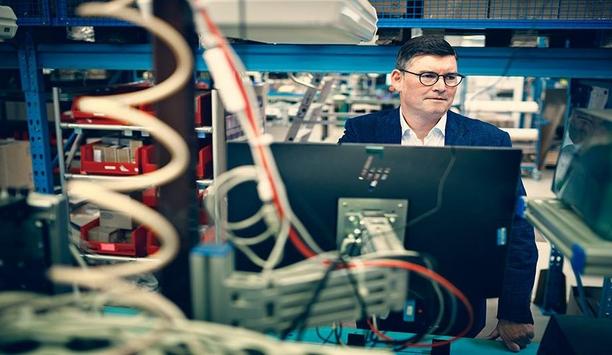Using air conditioners and electric fans to stay cool accounts for nearly 20% of the total electricity used in buildings around the world, according to a report from the International Energy Agency.
hybrid work model
As a unique mix of key factors, such as the adoption of the hybrid work model and escalating heatwaves in certain regions of the United States keep people indoors for longer periods, this 20% share represents an increasingly costly line item on household budgets.
Those within the market are responding by seeking out products that can help them control climates more efficiently.
Smart thermostats and inverters
Markets for smart thermostats and inverter HVAC controllers are clear illustrations of in-demand technology
Given what the industry is experiencing, the markets for smart thermostats and inverter HVAC controllers, which are clear illustrations of in-demand technology, are experiencing growth.
But as they do, are the technologies growing together or growing apart?
Rapid Growth in Both Markets
Discounts and incentives
The smart thermostat market has expanded steadily in recent years, with that growth projected to continue through the 2020s in part due to savings of up to 8% on energy bills homeowners can recoup with the best smart thermostats.
The sleek design and digital interface of modern smart thermostats, coupled with the increased control capabilities provided by mobile applications, seem to offer homeowners unprecedented control over their indoor climate. Moreover, the growing popularity of rebate programs providing discounts and incentives is making these solutions even more attractive.
Real-time heating/cooling needs with Inverter/VRF
Inverter/VRF HVAC systems are capable of adjusting the frequency of the compressor precisely
Concurrently, the market for Inverter/VRF HVAC control systems is also expanding. It is estimated that the global Inverter/VRF market will grow from USD $17.6 billion (2020) to $31.9 billion (2025) at a CAGR of 12.7%, with the US identified as the fastest-growing Inverter/VRF market.
Unlike their single-speed system counterparts which operate on an on/off or all-or-nothing dichotomy, Inverter/VRF HVAC systems are capable of adjusting the frequency of the compressor to precisely match the real-time heating/cooling needs of an environment. By regulating the fan speed and airflow, Inverter/VRF systems are extremely efficient at keeping an environment at a precisely set temperature.
Enhanced HVAC system performance or not?
Given the rapidly expanding markets, one might think that the easy interface of the current smartest thermostats and the operational efficiency of the best Inverter/VRF HVAC controllers could combine to create an exceptionally comfortable and cost-efficient experience for homeowners, and an easily interoperable install for HVAC pros.
However, the question remains: have these devices genuinely enhanced HVAC system performance in terms of accuracy, consistency, and efficiency? More importantly, have they made living spaces more comfortable? Have these growing markets and technological advancements made life easier for industry pros?
Persistent and pervasive incompatibility
This communication breakdown leads to issues such as set temperature variance, inefficient operation
Many are surprised to discover that the response to these important queries is frequently negative and “no”, due to a persistent and pervasive incompatibility between smart thermostats and Inverter/ VRF HVAC controllers.
It is this incompatibility that ultimately negates the advanced features and intelligence of each product. This communication breakdown leads to issues such as set temperature variance, inefficient operation, and energy consumption.
Confronting the Critical Interoperability Challenges
Ideally, the current smart thermostats, and the benefits they bring such as user-friendly interfaces, would integrate flawlessly with high-efficiency Inverter/VRF HVAC systems, enhancing comfort and cost-efficiency while simplifying installation for HVAC professionals.
Unfortunately, this ideal scenario is elusive. The core problem stems from these technologies developing and evolving separately, and in isolated environments.
Inadequate two-way communication
While individual support for certain protocols may exist, they fail to communicate complex instructions effectively
While individual support for certain protocols may exist, they fail to communicate complex instructions effectively due to inadequate two-way communication.
When a smart thermostat is improperly paired with an intelligent Inverter/VRF HVAC system, the resulting communication breakdown forces the HVAC system to revert back to single-speed operations, completely undermining its full potential, and sophisticated features.
Inefficiency and discomfort
Given its prevalence, what does this incompatibility mean for HVAC professionals and their clients? Consider a scenario where a user desires to adjust the indoor temperature to 68°F via a smart thermostat. Since the Inverter/VRF unit can only be adjusted by means of its own communication protocol, and the output of the smart thermostat is a dry contact closure, the 68°F would never be properly relayed to the air conditioner.
In other words, the smart thermostat does not provide information on how hard the system is working or the deviation of the current temperature from the desired set point. As a result, the system cannot modulate its output to precisely match the temperature needs of an environment, and the air handling unit within the system is forced to always operate at high speeds creating inefficiency and discomfort.
On-and-off mode
Homeowners miss out on the benefits of their investment, and installers find themselves in the predicament
Moreover, this style of operation is quite noisy, as the HVAC system drones on at full capacity every time it is reactivated. This on-and-off mode of operation consumes more energy, comparable to stop-and-start gas-guzzling city driving versus smooth highway cruising.
Both homeowners and installers bear the brunt of these drawbacks, homeowners miss out on the benefits of their investment, and installers find themselves in the predicament of either explaining this intricate issue or spending valuable time troubleshooting.
What Can Be Done to Address Incompatibility?
While this convergence of technology and home comfort presents significant potential and profound challenges, this situation is not without a solution.
The industry’s most advanced smart thermostats and efficient Inverter/VRF HVAC controllers both possess impressive capabilities, but the key to success lies in improving their ability to fluently exchange commands and information.
Translator between smart thermostat and Inverter/VRF
These remarkable devices contain the unit's protocols, deftly translating the commands of the smart thermostat
Thankfully, there are solutions within the market from industry pioneers that act as a "translator" between the smart thermostat and the Inverter/VRF unit.
These remarkable devices contain the unit's protocols, deftly translating the commands of the smart thermostat, creating a seamless conduit of communication.
Enhancing interoperability
Enhancing interoperability is a prevailing trend across the smart home sector, and it is imperative the HVAC industry works to align with this trend. By embracing such changes, HVAC professionals can offer unparalleled value and functionality to their clients while simultaneously reducing installation complexities.
This paradigm shift offers a unique opportunity to alleviate their challenges while providing customers with extraordinary value and performance from their HVAC systems.


















